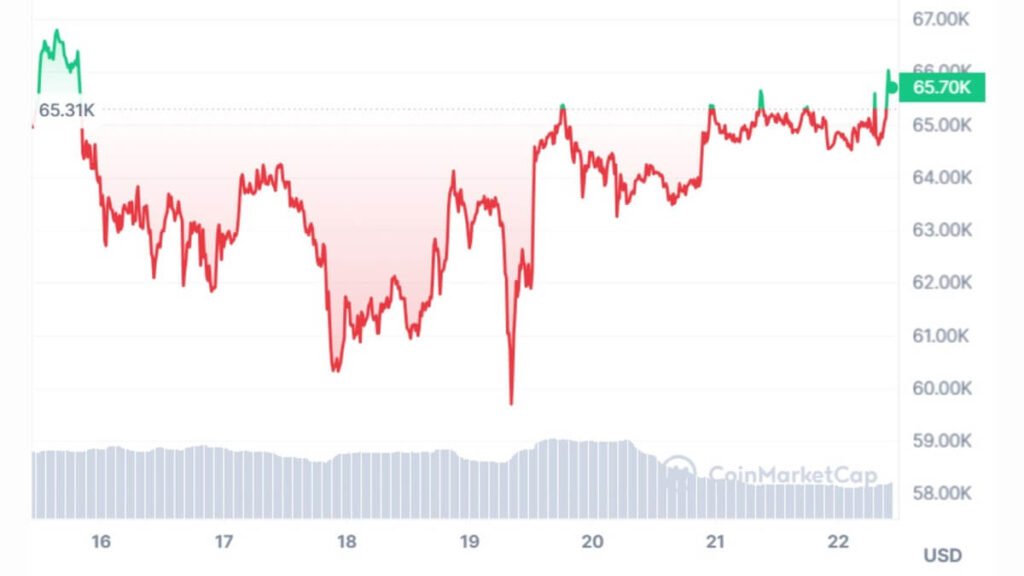The Bitcoin network underwent its latest halving event just after 12:09 a.m. UTC on April 19th. Bitcoin network halving event, a phenomenon deeply ingrained in the cryptocurrency’s design not only reduces the rate of new Bitcoin entering the market but also has historically been a precursor to significant price fluctuations.
In the week leading up to the halving, Bitcoin exhibited heightened volatility. Prices soared to a peak of approximately $65,310, only to plunge below $60,000 in the aftermath of the halving — a stark contrast to the $63,000 price tag just hours before the event. Such movements are emblematic of the speculative trading strategies often employed around halvings, where traders attempt to preempt the market’s response.
Despite the initial downturn, Bitcoin’s price rebounded to $65,000 within a day, and at the time of this report, it has even surpassed pre-halving levels, trading around $66,000. This recovery indicates a stabilizing market that is adjusting to the reduced supply influx with an overall upward price trajectory, suggesting that the initial drop was more a knee-jerk reaction than a lasting downturn.

Shivam Thakral, CEO of BuyUcoin, highlighted that “observing previous cycles, we may witness a notable decline in BTC dominance accompanied by a surge in interest and investment in altcoins within 12-18 months of the halving.” He further noted the significance of regulatory advancements such as the approval of Bitcoin and Ether ETFs by Hong Kong, marking a pivotal moment for institutional adoption and potentially bolstering Bitcoin’s market position.
The halving reduces the block reward for miners from 6.25 to 3.125 Bitcoins, intensifying the race among miners as profitability shrinks, yet also potentially increasing transaction fees as an alternative revenue stream. This recent halving saw an unusual spike in transaction fees within the halving block, mined by ViaBTC, which garnered over $2.6 million in rewards, a significant uptick from the pre-halving blocks.
Market resilience in the face of macroeconomic uncertainties, including inflation and interest rate concerns, continues to fuel optimism among investors.
Jyotsna Hirdyani from Bitget noted that despite potential short-term market dips due to broader economic factors, the trajectory for Bitcoin could see it reaching new all-time highs of $100,000 in the next 10 to 18 months.
However, some financial analysts remain cautious. Experts from JPMorgan and Deutsche Bank have suggested that the impacts of this halving were largely anticipated and already factored into Bitcoin’s current prices. They argue that significant price rallies post-halving may be more muted than in previous cycles, given the existing high baseline established by recent ETF-driven demand.
Thomas Perfumo of Kraken pointed to the symbolic importance of this halving amid global financial instability, describing Bitcoin as a “apolitical, unwavering monetary policy” alternative at a time when trust in traditional currencies is fluctuating.
As the Bitcoin network continues to mature, the implications of its halving events extend beyond mere price adjustments. They highlight the evolving dynamics of supply and demand, regulatory landscapes, and the broader economic environment in which cryptocurrencies operate. Looking forward, the blend of reduced supply growth, increasing institutional interest, and innovative financial products like ETFs may well dictate Bitcoin’s path in the ever-evolving crypto market landscape.
Read Also: Bitcoin ETFs Mark The Start Of Bitcoin’s Second Epoch



